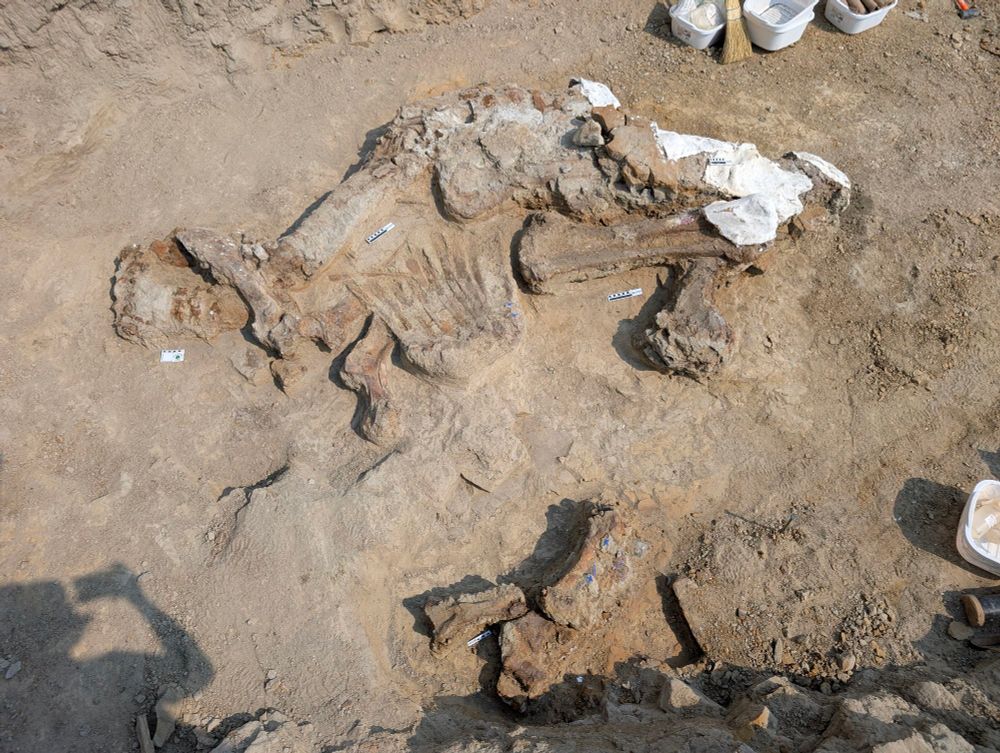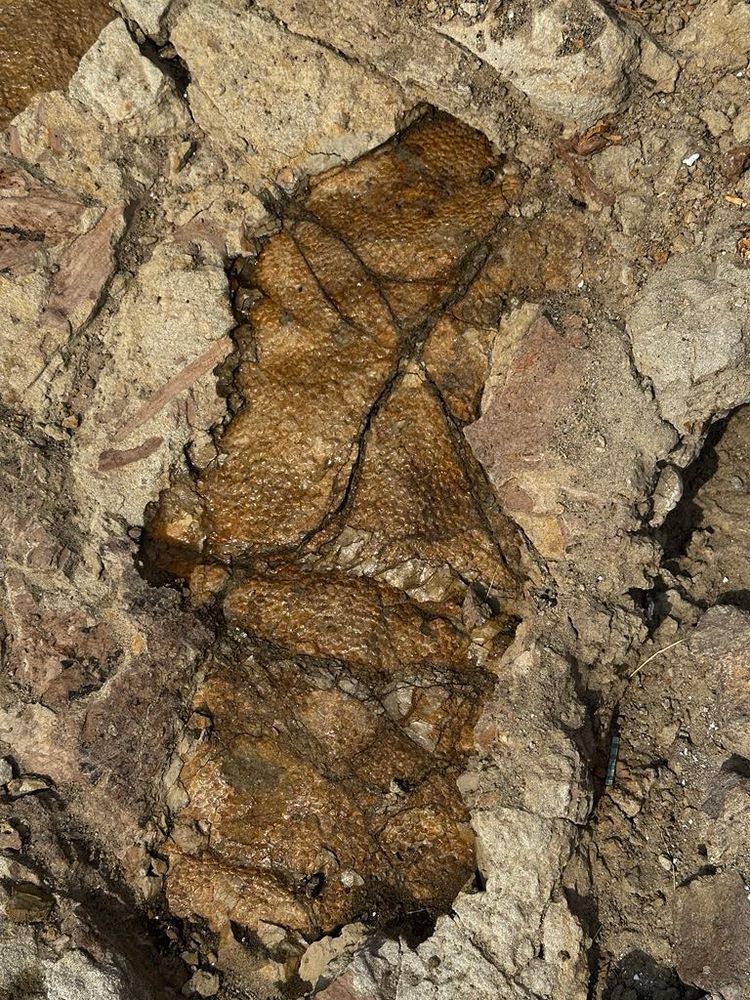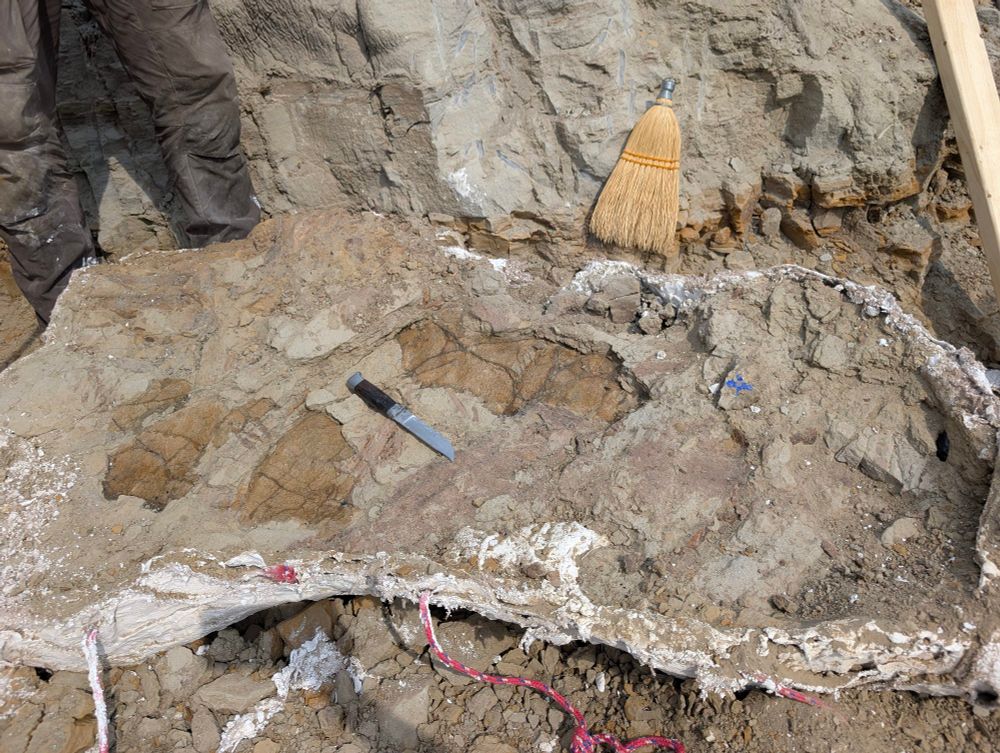
Happy Halloweeeeen! 🎃

Happy Halloweeeeen! 🎃
Work resumes on "Scorpio" the Lambeosaurus lambei whose quarry was reopened last year. While last year we collected the skull, this year the body blocks are revealing vast swaths of skin underneath! Exciting!



Work resumes on "Scorpio" the Lambeosaurus lambei whose quarry was reopened last year. While last year we collected the skull, this year the body blocks are revealing vast swaths of skin underneath! Exciting!





















Pattern and colours based on the greater roadrunner (my favorite paleoart trope)

Pattern and colours based on the greater roadrunner (my favorite paleoart trope)

Carnotaurus sastrei- colour pencils on paper
What a weird looking animal

Carnotaurus sastrei- colour pencils on paper
What a weird looking animal


Acheroraptor - white conté on black paper

Acheroraptor - white conté on black paper
Homotherium latidens
Watercolor pencils on paper

Homotherium latidens
Watercolor pencils on paper
Based on a photo of a Sichuan Takin I took at the zoo

Based on a photo of a Sichuan Takin I took at the zoo




